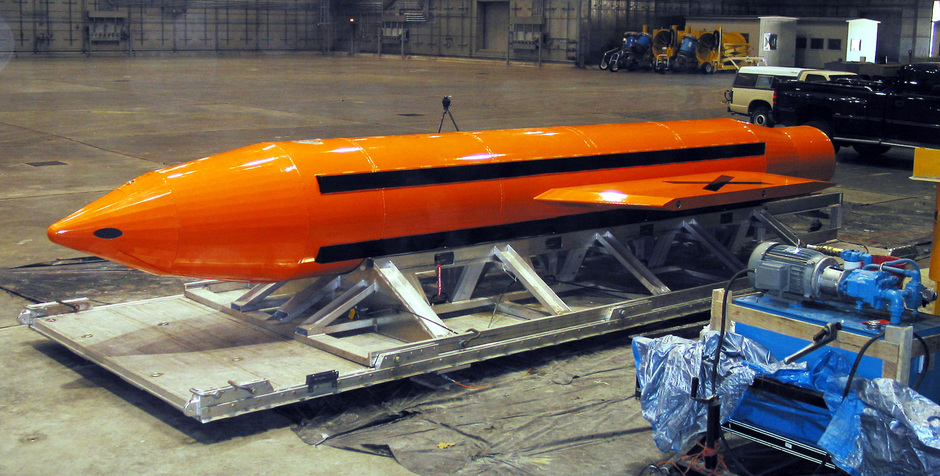U.S. Drops Largest Non-Nuclear Bomb on ISIS in Afghanistan
The United States military dropped America's most powerful non-nuclear bomb on Islamic State (ISIS) targets in Afghanistan Thursday, the first time this type of weapon has been used in battle, according to U.S. officials.
A GBU-43/B Massive Ordnance Air Blast Bomb (MOAB), nicknamed the "Mother of All Bombs," was dropped at 7:32 pm local time. A MOAB is a 21,600-pound, GPS-guided munition. The bomb is exploded midair and the ensuing shock waves are capable of crushing buildings, caves and tunnels in a one-mile radius. The bomb was dropped by an MC-130 aircraft, stationed in Afghanistan and operated by Air Force Special Operations Command, according to Pentagon spokesman Adam Stump. The target was an ISIS cave and tunnel complex in the Achin district of the Nangarhar province.

The attack indicates that the Trump Administration is serious about the ultimate and total defeat of ISIS. The military is currently analyzing the Bomb Damage Assessment (BDA). General John Nicholson, commander of U.S. forces in Afghanistan, signed off on the use of the bomb, according to military sources. The authority to deploy the weapon was granted to Nicholson by the commander of U.S. Central Command, General Joseph Votel. The use of the MOAB represents a change in the Rules of Engagement, with President Trump allowing his military combatant commanders to make tactical decisions on the ground about both targeting and weapons.
"As ISIS-K's losses have mounted, they are using IEDs, bunkers and tunnels to thicken their defense," Nicholson said in a statement following the strike. ISIS-K is the designation given to ISIS fighters in Afghanistan, where they have been growing in strength and numbers. A U.S. Green Beret Soldier was killed in a firefight with ISIS-K earlier in the week." Nicholson added, "This is the right munition to reduce these obstacles and maintain the momentum of our offensive against ISIS-K. U.S. forces took every precaution to avoid civilian casualties with this strike. U.S. Forces will continue offensive operations until ISIS-K is destroyed in Afghanistan.
There are about 8,400 U.S. troops in Afghanistan and they regularly perform counterterrorism operations against ISIS in the Nangarhar Province. The U.S. counterterrorism mission is separate from the NATO-led effort to train, advise and assist the Afghan army and police force. While ISIS is identified primarily with its presence in Iraq and Syria, U.S. and coalition officials have long expressed concern about a growing presence in Afghanistan.
Dropping the MOAB on ISIS sends a clear and unmistakable message to ISIS leadership. Other messages will likely be sent in the future
